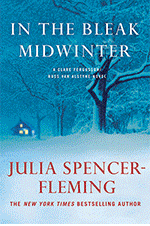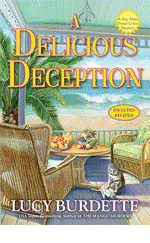HANK PHILLIPPI RYAN: Isn't Jungle Red amazing? The other day–and you may have seen it–there as a comment on the blog from Margo, who talked about raising monarch butterflies.
When I read it, I stopped in my tracks.
I had to know more!
I tracked Margo down--and asked her: could you please tell us more about this?
Well, Reds and readers, within a day, she'd sent this brilliant and charming and entertaining and educational and inspiring essay, WITH PHOTOS!
And I am so honored to share with with you!
A KALEIDOSCOPE OF MONARCHS
Hi, my name is Margo Patrick, and I am delighted to have been asked to tell you a bit about our life with Monarch butterflies. Our family has always shared our world with nature. I wanted to study Botany at university in the late 60’s, but since only 5 people wanted it that year, it was cancelled so I moved to Biochemistry. I guess that makes me a frustrated botanist.
Hi, my name is Margo Patrick, and I am delighted to have been asked to tell you a bit about our life with Monarch butterflies. Our family has always shared our world with nature. I wanted to study Botany at university in the late 60’s, but since only 5 people wanted it that year, it was cancelled so I moved to Biochemistry. I guess that makes me a frustrated botanist.
Marriage took me to Quebec & Ontario for 30 years, where we farmed, gardened, and shared our home with kids, baby raccoons, skunks, cats, dogs, turtles, rabbits and a crow. We moved back to Nova Scotia to retire in 2003 (and moved a lot of that foolishness with us), and since moving here have developed many new interests.
When we were kids and had our cottages next door in the summer, my father and his brother would often tend to get a bit ribald when the ‘Kool-aid’ was flowing freely (not the kind in a package, but something similar to it with perhaps a flavour enhancer). In order to put a stop to ‘that’ conversation, Aunt Myrtle would suggest that we should talk about the monarch butterfly of which there were none other than the nature shows on telly. Who would have thought that now it would not only become a real part of the conversation, but a reality where we live?
When we were kids and had our cottages next door in the summer, my father and his brother would often tend to get a bit ribald when the ‘Kool-aid’ was flowing freely (not the kind in a package, but something similar to it with perhaps a flavour enhancer). In order to put a stop to ‘that’ conversation, Aunt Myrtle would suggest that we should talk about the monarch butterfly of which there were none other than the nature shows on telly. Who would have thought that now it would not only become a real part of the conversation, but a reality where we live?
We went back to Ontario one summer to bring home the seed pods from the Common Milkweed plant, which is a nuisance in farmer’s fields there. It took us 5 years to finally get a milkweed patch growing enough plants to attract Monarch Butterflies. The Monarchs are a rare sighting in this area and in most of the Maritimes. We saw a butterfly and a few larvae one year (2017), only a few butterflies on year 2.
A few years ago, we noticed that the eggs would hatch, and then the larva would disappear, which meant there were no butterflies to go through to next year.
We were already hooked on the butterflies and were now watching eagerly for their arrival in July. By then the milkweed would be flourishing and in flower, and attracting bees and other insects. However, the loss of the butterfly in the early part of their life cycle bothered us.
We were already hooked on the butterflies and were now watching eagerly for their arrival in July. By then the milkweed would be flourishing and in flower, and attracting bees and other insects. However, the loss of the butterfly in the early part of their life cycle bothered us.
We searched the internet for things that ate monarch larva. One of these was earwigs, and since the milkweed was in my vegetable garden, we did not want to let the chickens peruse the patch in search of bugs since they were more likely to eat the vegetables than the earwigs. Jack started going through the milkweed a few times a day with a dish of hot soapy water and a pair of tweezers – brutality at its worse – and retirement at its most foolish.
Then we took an old aquarium, added some soil to the bottom, and then tossed in some milkweed leaves and some larva. The caterpillars grew and grew and after 2 weeks would crawl to the screening on the top.
Here they attached themselves with a bit of spit-glue known as a button, hung upside down in the form of a ‘J’, and proceeded to make a green cocoon around themselves. They would soon decorate their cocoon with a beautiful gold necklace, and just hang around metamorphosizing for 2 weeks.
As their time came closer to emergence, this would look black. What really happens is the cocoon goes transparent, so that you can see the black of the wings inside. The bottom pops open, and the butterfly squeezes out – shrunken and misshapen, but ready to meet the world just the same. This whole process takes about a minute, so you have to be on guard to see it.
After about 2 hours of flexing and beginning to flap, the wings are dry enough and strong enough to head to the skies. It is at this point that we release them.
We have had our grandkids here, as well as other kids and lots of adults. There is a magic in their eyes as they feel the gentle feet of the butterfly as it sits on their hand and then poof and it is off soaring into the universe.
We have had our grandkids here, as well as other kids and lots of adults. There is a magic in their eyes as they feel the gentle feet of the butterfly as it sits on their hand and then poof and it is off soaring into the universe.
This year the monarch was declared an endangered species, at least in Canada. We are lucky to now have 175 milkweed plants in the garden. We built 2 new incubators, which although they worked well, still have a few design flaws to be fixed next year. Never the less, we have already released about 50 adults. There are about 60 more pupa to go, and more larva growing up.
The next generation that should be born in mid-September are the ones that should go south. They seem to determine this by the temperature of the evenings (below 57F) and the shortening length of the days to trigger them to go from a reproductive butterfly to a migrating one.
The next generation that should be born in mid-September are the ones that should go south. They seem to determine this by the temperature of the evenings (below 57F) and the shortening length of the days to trigger them to go from a reproductive butterfly to a migrating one.
For the first time I have some tags, so will be learning that next phase of the operation. It is a little paper dot that you place carefully on their wing with a toothpick. Should anyone see this butterfly it will be traceable to where it originated, hopefully generating more information on this magnificent bit of nature.
So, if you look up, or feel a whisper on your arm, you can wonder if this bit of magic came from Eastern Canada on its way to a tree in a forest in Mexico. Wish it bon voyage, in the anticipation that we may see its next generation whisk its way back here next summer. Hope springs eternal. May there be a kaleidoscope of monarchs next year.
So, if you look up, or feel a whisper on your arm, you can wonder if this bit of magic came from Eastern Canada on its way to a tree in a forest in Mexico. Wish it bon voyage, in the anticipation that we may see its next generation whisk its way back here next summer. Hope springs eternal. May there be a kaleidoscope of monarchs next year.
HANK: Oh, I have now read this about a million times, and I am again transported. Thank you, thank you, Margo! A kaleidoscope of Monarchs. I am...in awwwww. And in awe.
(We have a patch of milkweed in our back yard, and we have seen at least two Monarchs. They are so instantly eye-catchingly gorgeous.)
How about you, Reds and readers? And OH! Margot! This is absolutely wonderful. Thank you!
















This is just amazing, Margo . . . thank you for sharing it with us.
ReplyDeleteSadly, we don’t see as many monarch butterflies as we used to find in the pine barrens . . .
Oh that is so sad! But isn’t this post amazing! It makes me so reassured…
DeleteI haven't seen a Monarchs, or any butterfly really, in ages. I should see what butterflies we have in my part of southern California.
ReplyDeleteYes, that would be interesting to know!
DeleteYou can plant whatever version of Milkweed is native to your areas and that's one if the BEST WAYS TO HELP THE MONARCH SURVIVE. PLEASE do if you can! Beware "tropical milkweed" as it doesn't die baci in warmer climates and that creates a host of problems for the monarchs. If you do have tropical Milkweed cut it back when it's time for the monarchs to head south. Let's do this!
DeleteThank you Margo for sharing your story about Monarchs. My friend use to raise them as well before she moved. Around here, I've seen a few butterflies.
ReplyDeleteThat's so encouraging!
DeleteMargo, bravo to you for sheltering the baby Monarchs! Those green hanging cocoons are so beautiful. And thanks to Hank for asking her onto the front blog.
ReplyDeleteQuestions: You are busy looking for larvae on the milkweed so you can move them to the incubators, yes? For how long a period is that? And then you have to watch closely for emergence so you can open the top and not trap them in? What do the adults eat?
The monarchs seem to arrive Mid-July which usually means there are larva to be seen by the first of August. At that time, we start to bring them into the house. It does mean patrolling the garden both to rescue the babies and to eliminate the earwigs. The phase from start of larva to preparing to cocoon takes about 2 weeks, then another 2 weeks in the cocoon until the monarch. Overall, the season for us is from August to October.
DeleteBy the way, we used to have the incubators in the house and just refill with fresh milkweed every day, but we had to move them outside both to better acclimatize them and because they stink! As well as eat, all those caterpillars do is poop and it is huge, lumpy and very unpleasant!
DeleteWhen the butterflies emerge, they exit into the screened-in aquarium which also contains the other ripening cocoons and the large caterpillars waiting to ‘J’. It can be tricky trying to lift the roof and take their photo, sex them, and not let either that one or another escape. The butterflies fly off and sup on the nectar of the milkweed, as well as other plants in the garden – Liatris, Coneflower, Monarda. They also often dive down and slurp a drink from a mud puddle – it provides extra nutrients.
DeleteThis is SO brilliant!
DeleteThank you for all these details!
DeleteThank you so much for the details, Margo. Fascinating!
DeleteMargot, this is magical! thank you! we have a neighbor in Key West who slips milkweed into the manicured landscaping so we see the butterflies around the condos. John has been trying to do this at home so I will show him your blog and get him reinspired!
ReplyDeleteYes, we have a big milkweed patch in the back yard, and you don't really notice unless you are looking for it. I hope the monarchs we see come from there.
DeleteMargo, thank you so much for sharing your story. I love butterflies. And am fortunate enough to live in an area where home owners and towns allow wild flowers to grow freely in drainage ditches. My wonderful amazing niece planted a butterfly garden this year and raised several Monarchs to release into the wild. I plant hanging baskets with plants that attract butterflies and bees. Mostly bees. We all need to take better care of our home.
ReplyDeleteI bet that is so pretty! xx
DeleteAnn, what do you plant in your hanging baskets? I want to know for next year!
DeleteEdith, I plant zinnias and marigolds and anything with bright oranges and reds.
DeleteMargo, here in southern Ontario I do see Monarchs, not too many, but they are here. They love the big yellow daisies. A neighbour up the street has a wild garden and it’s lovely, she has milkweed there. Wonderful essay, thanks so much for doing this, and loving it too of course!
ReplyDeleteJoyce W.
Margo, thank you for this essai and for what you do for the monarchs.
ReplyDeleteI love butterflies and see many kinds around here but other than monarchs I can’t identify them.
There were beautiful carterpillars eating the parsley on my balcony this summer and they were so cute that I let them. They had black rings and green rings with yellow dots and I didn’t want to destroy them.
Also before Covid I went many years in row to visit Papillons en liberté at the botanical garden of Montreal where we could see the many stages of butterfly life and where many kinds of butterflies were flying around us. Loved it.
Danielle
Thank you for sharing this. So ... monarch butterflies can be raised like bees, but creatures without the stingy bits.
ReplyDeleteWhen my husband and I were in Fort Worth in an October, we were at the city's Water Gardens and noticed flying above our heads. One flapped into the right light angle for us to see they were butterflies migrating.
WOW! Talk about magical!
DeleteMARGO: Bravo for creating a safe sanctuary for the monarchs! I don't see many in Ottawa but some neighbours have planted milkweed in their wildflower gardens to attract them.
ReplyDeleteWe got our milkweed from just down the road in North Lancaster!
DeleteOh thank you so much for this post, and for the work you are doing to help this precious beauty! I love the pictures. A priest friend of mine was lucky enough to go to a place on Mexico where the Monarchs winter and found it an unforgettable experience. Margo, you and your family are heroes! Thank you again.
ReplyDeleteI have to mention the book Flight Behavior by Barbara Kingsolver which is a wonderful story. Monarchs and their habitat are a vital part of the tale.
Thanks for the book recommendation. I just downloaded it from the library, sandwiched between Vicki Delany’s marvelous tea-mystery, a WW2 mystery, and another story from Caroline Bishop. It’s a good thing it is sunny and warm today, so I can read!
DeleteI'll second the Flight Behaviour recommendation (or indeed anything by Barbara Kingsolver). Amazing stuff.
DeleteOh, I will look for that!
DeleteGillian, thanks for that book recommendation. I’ll look for it at the library. I love Barbara Kingsolver’s fiction and non fiction.
DeleteDebRo
Looking this up, thank you!
DeleteMargo, thank you for an informative post. If I plant milkweed seeds, which variety should I plant?
ReplyDeleteWe have common milkweed. It is very difficult to get started as the seeds have to go through a freeze/thaw cycle and then take a few years to sprout, or so it seemed to us. Once the plant gets going it spreads by rhizomes underneath the ground, which spread nicely or too nicely as the case may be, as it can become invasive, hence it being labelled a noxious weed. I tend to be perpetually pulling it from the various vegetable beds.
DeleteSwamp milkweed seems to be what it recommended, but I can tell you nothing about it. I would like to plant some and try it next year. Seed seems to be easily available – try Monarch Watch out of Kansas.
Yes, ours is growing like crazy! For better or worse, but I cannot bring myself to pull it.
DeleteI just received some milkweed seeds from a non-profit organization in Georgia that will send you milkweed seeds appropriate to your growing area. We still see some monarchs here in central Pennsylvania but not as many as in the past. Fingers crossed that I can get some milkweed growing in my garden! Emily Dame
DeleteMargo what an amazing story - thanks so much for sharing it. What struck me as even more amazing was Hank's response after reading Margo's comment! I so often breeze through comments like "raising Monarchs" and think, "cool". But, Hank stopped, asked for more information, and voila... So thanks to Hank too!
ReplyDeleteMargo, thank you for sharing. We have planted milkweed and it's been in our garden for several years now, but we haven't tried raising butterflies. Although many species of insects visit the flowering milk weed plants, I have not seen one larvae or even what I would consider to be eggs on any of our plants. We've left the plants alone to spread, but perhaps we need a tutorial on how to "make butterflies." I am in awe of what you are doing!
ReplyDeleteMargo, my nephew gave his son a butterfly 'farm' a few years ago and the little guy loved it. It did involve nasty cleaning (by my nephew!). The little guy has mentioned he would like to do that again--I think I'll mention your post to my nephew. We have common milkweed growing here and there about the property--I've seen caterpillars and some monarchs, especially since the milkweed spread.
ReplyDeleteMonarch Update:
ReplyDeleteI just tagged my first 3 butterflies, and it is all and more what I expected. I learned a better way to pick them up – by their dorsal wing. They remain still and easy to handle. Then you take the sticky number off the paper, sex the butterfly (males have dark circle pouches on their bottom wing), record all the data, and gently press the tag onto the bottom wing. Then on a wing and a prayer, off it goes!
Margo, so exciting for a first, wing and a prayer indeed. What an interesting “crop and harvest” you have with your Monarchs. Thank you for coming to Jungle Reds. And thanks Hank for seeking Margo out! Elisabeth
DeleteThanks for sharing all this, Margo.
ReplyDeleteI allow the milkweed to grow fairly rampant in my city garden in Toronto (except among the hostas) but don't always have the Monarch visitors. I think I had none this year, but when they come, I'm so excited.
We are lucky here in Houston to be on the Monarch flight path as they migrate from North America to their winter home in Central Mexico. They are plentiful here, sustained by conscientious Monarch enthusiasts who plant the most delicious things the beauties like to feast on. Thanks to them, and the diligence of others like Margo and her husband, the beauties will be around for generations to come.
ReplyDeleteOh, have you seen that???
DeleteMargo, you are doing the Lord's work! Truly. It's not easy to counteract generations of clearing and other abuse of our poor earth, but we need lots more doing what you are.
ReplyDeleteWe have acres of milkweed at our farm, and have slowly added more and more native plants to some of the fields. In early July we walked through one meadow filled with milkweed, rattlesnake master, blazing star, and lots of other plants, grown by broadcast seed. It's taken a few years, but wow, is it worth waiting for. The pollinators were busy!
My husband collected a couple of those beautifully bejeweled cocoons to set up time lapse photography. When one was getting ready to emerge we both watched as the same process you describe happened: the cocoon went black, and the fat, polka dot butterfly emerged, sluggish and swollen. Within minutes the wings thinned out and became ethereal, and I held my breath as it flapped them. Steve released it a little while later, such a great feeling to see it soaring.
That was a wonderful moment in my life, one everyone should be able to see at least once. Congratulations for learning how to safely tag those delightful, and so necessary creatures, Margo.
Karen, is this time-lapsed video available to watch? This is Kathy Boone Reel. I couldn't get Anonymous to change to my name.
DeleteKathy, this is Karen, in case you check back today.
DeleteAs far as I know, it isn't. But I bet there's a YouTube of the metamorphosis.
Margot, you're doing the good work up there! We had some milkweed on our three acres when we moved here in 1994, and Ross assiduously cultivated more, spreading the tiny seeds on fertile soil and carefully mowing around any plants that escaped the field and took root in our lawn or garden. As a result, we see Monarchs every year. This year, I just gave up and embraced the anti-lawn concept: my front yard is basically a shady meadow. Which has happily resulted in lots of bees and butterflies!
ReplyDeleteWhat an absolutely beautiful post. Margo, thank you so much for your efforts to support this magnificent creature. The world needs more people like you!
ReplyDeleteMargo, this is the best. I've always loved Monarchs. I can't even imagine tagging them - you are AMAZING!!!
ReplyDeleteIsn' it??? Magical.
DeleteFabulous and fascinating! How wonderful, Margo. Thank you so much for sharing with us! Now when I see one of those beautiful creatures I'll whisper a wish for safety and God speed.
ReplyDeleteWhat a fabulous post! Thank you so much for all you are doing to preserve the Monarch!
ReplyDeleteWe've got lots of milkweed on our property in the St. John Valley of Aroostook County, ME, but it's scattered in the fields not concentrated. I've not seen a Monarch, but now I'll be on the lookout. And since we are SW of you, I'll be looking for the telltale dot on the wings. It always amazes me that these fragile butterflies make their way back to Mexico each year from wherever they originate. A perfect story of perserverance.
Thank you so much for the information and the photos! A few years ago in late September or early October I visited our local Audubon Center on a Sunday afternoon. As I walked around the grounds, I saw a couple of monarch butterflies, and then I saw more, and then I saw more, and then the air was filled with them. I sat on a bench and watched them for a little while. All I could see when I looked up and around was orange and black everywhere. It was so beautiful and breathtaking that I literally did hold my breath for a couple of minutes. I was afraid that I would disturb the butterflies if I took a breath! I don’t remember how long I sat there. It was one of the most magical moments in my life! I’ve been seeing monarchs for about three weeks so far this summer. I hope to see more and more! Thank you for all you do for the monarchs!
ReplyDeleteDebRo
I don’t have any garden space as I live in a condi. Would it be possible to grow milkweed pots in my deck?
I don't know but I doubt it. However they love to feed on nectar plants - try monarda, liatris, even geraniums. I have no doubt petunias would work as well!
DeleteThanks!
DeleteDebRo
Garden phlox also attracts, them, as well as zinnias.
DeleteGood for you and your husband, Margo! I used to volunteer in the Butterfly Center at the Houston Museum of Natural Science. It was wonderful to sit and watch all those fluttering butterflies while showing an insect to the kids. I also worked in the greenhouse where we raised passionflower vines for larva to feed on. The museum has a whole wonderful process for raising butterflies to finally release them in the center. It has been a few years now and my memory of my various jobs is fuzzy but it was very rewarding work.
ReplyDeleteMARGO: Welcome to JRW! I love this post about the monarch butterflies. I was wondering if you write mystery novels too? I remember as a young child I was fascinated by the kalesidoscope (spelling?) of the colors on the butterflies. And the Lawrence Hall of Science in Berkeley sometimes had exhibits about monarch butterflies. Have you been to the Lawrence Hall of Science in Berkeley? it is above the campus of the University.
ReplyDeleteHANK: Thank you for introducing us to Margo. On another topic, did you and JRW know that September is Self Care Month AND Deaf Awareness Month? Any chance there will be a guest post by a deaf or Deaf Author? or someone who works with Deaf people like Blair Fell or Kelly Brakeville?
Happy Sunday,
Diana
p.s. Melanie Jacobsen, who writes Rom Com, is also an Adult Child of Deaf Parents.
DeleteDiana
No mystery books for me. I leave that to much more talented authors, but I love to read them. The best I have to my credit was writing random thought editorials every month for 10 years - anything from what we had to supper, the decline of home ec in schools, to the death of my dog, which of course led to another about the egg salad sandwiches at funerals.
DeleteOh, brilliant idea! Thank you, Diana!
DeleteHank, you must invite Margo back to tell about egg salad sandwiches at funerals. My imagination is exploding! Elisabeth
DeleteBrilliant idea! Margo? Egg salad at funerals? Let us know when you want another post day! Seems like we have struck essay gold! (and remind me to tell you about home ec--which I always called Home Ick. :-) )
DeleteWhen I still had the house, I grew tons of milkweed, but fewer and fewer butterflies. Now I understand why. But I love the scent of milkweed and the glimpses of the butterflies.
ReplyDeleteI would grow the milkweed for the scent alone, forget the monarchs. The first time I smelled it I fell in love with it, and it pervaded my garden, even though I don't remember monarchs in our area of eastern Ontario.
DeleteYes, they are amazing...xx
DeleteThanks so much, Margo, for this information. We haven't seen as many monarchs this year as we are two years past the Holiday Farm Fire and even the birds are fewer, although we have seen a species of moth (Forester Moth) that has not been on the West Coast. It's eating holes in many of our plants and vegetables. The monarchs are endangered, but the US is yet to declare it. Good for Canada! And thank you for your efforts.
ReplyDeleteI could not get this to capcha my profile. Ack! It's my post above.
DeleteThis comment has been removed by the author.
ReplyDeleteMargo, Here in Marin County (northern CA) they're trying to get rid of the South American milkweed because it can cause problems for monarchs. That's what I planted a few years ago and it does attract Monarchs that morph into the next generation. But thgis winter I guess I have to dig it all out and find native milkweed. do you have a local, native milkweed in your garden? Thanks for a great ;post (and you, too, Hank, for the brilliant find!)
ReplyDeletexioox!
DeleteMargo, thank you for this delightful, informative piece about the monarchs. They are indeed so beautiful, and I thank you and your husband for working to keep them in our world. I can't think about monarch butterflies without thinking of my dear friend Dana. Dana raised monarchs, too, and he was quite successful. He died three years ago, and I miss him and his monarch updates terribly.
ReplyDeleteAW...and so wonderful that you think of him when you see such a lovely creature...
DeleteA wonder to behold! Thank you so much for this.
ReplyDeleteThis is deaun and I know I am late to the party today.
This comment has been removed by the author.
ReplyDeleteOh, yikes...Yes, google seems like a plan!
DeleteSorry about that comment yesterday. It was really inappropriate. My apologies!!! I was thinking about how I really wanted to kill this horrid twit and how I could turn this into a murder mystery. I talked to a counselor online via texting and it was very helpful!
DeleteSorry to be late to the party today, but thank you, Margot, for the wonderful post! (And thank you Hank for inviting Margot!) Here just north of Dallas we are in the migratory path, so I'll be looking out for your monarchs! We have lots of native flowering plants in our garden, but no milkweed. When is the best time to plant the seeds?
ReplyDeleteGreat question!
DeleteThis is Fascinating! Thank you Margo for sharing!
ReplyDeleteSO agree!
DeleteBrilliant…thanks so much for sharing!
ReplyDeleteLovely to read about the monarchs and enjoy the photos. Thanks, Hank and Margo. I've never seen a butterfly come out of a cocoon, but I can imagine it's beautiful and moving. Once, at least 35 years ago, I visited a monarch butterfly grove on the coast in southern California where tens of thousands of them wintered. I'll never forget it.
ReplyDeleteOh, how breathtaking! Yes, I'd love to see that, too.
DeleteI've grown the orange butterfly weed for years but haven't seen many monarchs. The lovely swallowtail caterpillars eat parsley. Since I've been using the parsley in the tube, I didn't grow any this year and haven't seen any swallowtail butterflies. Next year I'm growing parsley for the butterflies.
ReplyDeleteOh, that is such great information--I had no idea!
DeleteThis comment has been removed by the author.
ReplyDeleteI should return to raising Monarchs, which I did for a couple of years with a friend of mine. We raised them in our Lanais in special cages. We would "babysit" each other's caterpillars and chrysalises. At the end of the last season I put the remaining milkweed plant outside in an attempt to get it some sunshine so it would continue to grow enough to feed my remaining caterpillars. To my surprise, a bunch of Monarchs must have been looking for leaves to lay their eggs because before I knew it I had 100 very hungry caterpillars and not enough Milkweed. Luckily I found adoptive parents through our Butterfly club. It is a rewarding, but time consuming, endeavor. If the plants are left outside in the wild the caterpillars are killed by many predators, who quickly find out they bit into something they wouldn't like. Bugs would leave their eggs buried in their skin. And if fed any plant grown in a yard that has been treated with chemicals, or plants from nurseries that use Neem oil, the caterpillars die a horrible death. An acquaintance brought me a few huge stalks from their yard. The size alone should have been a warning but I was desperate. I tried two little cats on it and they both keeled right over. I learned so much and enjoyed their company immensely. Hand-raising them is a great way to increase their numbers.
ReplyDelete